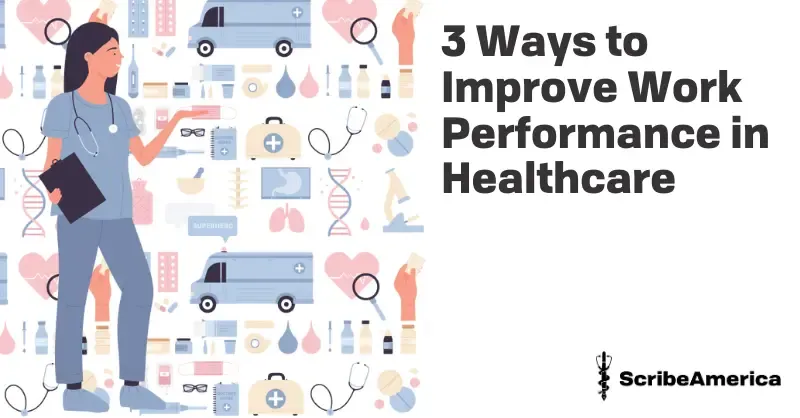Key Takeaways
- Productivity in Healthcare: Meeting and exceeding productivity standards in healthcare improves efficiency, patient satisfaction, and treatment outcomes.
- Measuring Productivity: Metrics such as patient visit lengths, wait times, satisfaction scores, and staff performance help determine how to measure productivity in healthcare.
- Employee Productivity: Knowing how to measure employee productivity in healthcare involves tracking performance data, training results, and workload balance.
- Ways to Improve Performance: The most effective ways to improve work performance in healthcare include using smart devices, supporting staff wellbeing, and improving communication.
- Healthcare Workplace Productivity: Creating a culture of collaboration, technology adoption, and staff support leads to sustainable productivity in healthcare workplaces.
Meeting the productivity standards in healthcare is a must, but exceeding them is a desired outcome for any facility. This can benefit both the hospital and the patients themselves – a more efficient clinic means quicker reaction, faster diagnosis, and enhanced prevention, thus resulting in better treatment.
In this article, we will focus on the ways to improve work performance in healthcare. Do you feel that you need this knowledge? Then read on!
How to Measure Productivity in Healthcare?
Achieving high productivity in healthcare is one of the ways how you can improve patient experience. But, in order to do so, you have to know how efficient your clinic is in the first place.
There are quite a few metrics through which you can measure how productive your healthcare employees are. Some of them are directly related to efficiency, other ones can be affected by low or high productivity, yet it is not the sole factor determining them. So, what should you pay close attention to?
- Patient visit lengths – Long visits may signal process failures, while smooth, efficient patient flow reflects high productivity.
- Patient wait times – According to a 2018 Vitals study, the average waiting time for primary care is 18 minutes, longer for specialists. Longer wait times often indicate inefficiencies.
- Patient satisfaction and retention rates – High retention and satisfaction may reflect efficient workflows and effective resource use.
- How to measure employee productivity in healthcare? – Track performance data, analyze staff workload balance, and use productivity benchmarks to compare against industry standards.
Adopting electronic health record (EHR) systems can provide data-driven insights into performance metrics. These systems not only streamline documentation but also highlight potential inefficiencies, enabling managers to implement evidence-based strategies to boost productivity in healthcare.

Ways to Improve Work Performance in Healthcare
Knowing how to measure productivity in healthcare, let’s focus on how to improve it. The solutions will often vary depending on what bottlenecks appeared in your facility. Here are some of our ideas.
1. Introduce Smart Devices
Smart bands, trackers or even motion sensors can do magic. Often, qualified nurses waste time looking for equipment or searching for a patient. Yet, if you introduce IoT devices, they will know exactly where the person or utensil is. Technology is the future of healthcare, and this is the example of that!
2. Improve Staff Wellbeing
An exhausted, demotivated employee will never be fully productive. Thus, if you wish to improve the work performance of your healthcare facility, you need to ensure that your staff is in good condition – both physically and mentally.
One of the most effective ways to improve work performance in healthcare is by implementing flexible schedules and offering stress-management programs. Studies show that healthcare workers often face burnout due to demanding schedules.
Providing access to wellness programs and mental health support can significantly enhance their morale and productivity. Ensuring that staff have access to regular training sessions can also help improve performance. These sessions can familiarize them with the latest practices and technologies, aligning their efforts with current productivity standards in healthcare.
3. Enhance Communication
Effective communication between healthcare professionals is critical. The better the physicians, nurses, and medical scribes exchange information, the faster they can work. Thus, you should not underestimate its importance.
Implementing tools like centralized communication platforms can streamline workflows and reduce misunderstandings, which directly impacts productivity. These platforms allow for real-time updates on patient care, ensuring everyone is on the same page. This is one of the most impactful ways to improve productivity in a healthcare workplace, as seamless communication can eliminate unnecessary delays.
Conclusion: Best Ways to Improve Productivity in Healthcare Workplace
Improving productivity in healthcare is not just about efficiency—it directly saves lives. By reducing wait times and increasing workflow efficiency, hospitals and clinics can deliver faster and better care.
The most effective ways to improve productivity in healthcare workplace include:
- Leveraging technology such as smart devices and EHRs.
- Supporting staff wellbeing through flexible schedules and training.
- Enhancing communication with modern collaboration tools.
By focusing on these strategies, healthcare facilities can exceed productivity standards in healthcare and ensure the best possible outcomes for both patients and staff.
You now know how mental and physical health is crucial for the productivity. But, do you know how to prevent physician burnout? If not, read our article: What Is Physician Burnout and How to Deal with It?




